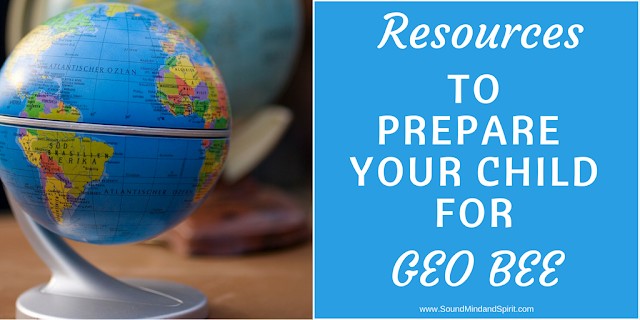My daughter, Birdie, developed a strong passion for geography after the 2014 Men’s FIFA World Cup. Her knowledge of the countries and regions involved, including some obscure ones, was impressive. That summer, she asked for a globe for her birthday, marking the beginning of her geographical journey.
Last year, in fourth grade, Birdie’s school announced its first-ever Geography Bee, a contest sponsored by National Geographic. Officially called the National Geographic Bee, it progresses from school to the national level. Birdie was excited but nervous about answering questions in front of the school. The decision to hold the GeoBee after school eased her worries, allowing her to focus on preparing for it.
Her confidence in answering the questions themselves was high; her nervousness stemmed only from public speaking. After researching the types of questions asked, I realized that the Geo Bee isn’t just about knowing countries, capitals, and oceans. The National Geographic Bee asks questions about physical, political, economic, and cultural geography of the world, as well as current events. This encompasses a vast amount of information.
To ensure Birdie had the necessary knowledge, I purchased books and resources from Amazon to aid in her preparation. However, Birdie didn’t intensely cram for the test. Given her passion for geography, simply having these resources at home was enough to pique her interest. We engaged in very little formal Q&A, allowing her to absorb the information in her own way.
The books specific to the Geo Bee helped me guide her toward areas where she needed more knowledge. For example, I realized the importance of knowing about US National Parks and significant areas of interest in other countries. I tried to engage her by showing her pictures and discussing the parks we’ve visited and those we’d like to see.
Now that we’ve experienced the Geo Bee, I want to share the resources that helped Birdie as a competitor and me as her mother. These books and resources from Amazon played a key role in preparing Birdie for the GeoBee. Specifically, understanding How To Ace The National Geographic Bee Official Study Guide became crucial.
Essential Resources to Prepare for the Geo Bee
Here are some suggestions based on what we used to prepare. Digital resources are also abundant, but that’s a topic for another post.
- National Geographic Bee Official Study Guide: This is the cornerstone. Master it. Know it inside and out.
- National Geographic Kids Almanac: A yearly updated almanac covering a wide range of topics related to geography, science, and culture. Excellent for staying current on world events.
- Atlases and Maps: Essential for visualizing locations and understanding spatial relationships.
- Geography-themed Games and Puzzles: Make learning fun and engaging.
- Online Resources: Websites like National Geographic Education offer interactive maps, quizzes, and articles.
How to Use the Official Study Guide Effectively:
- Understand the Scope: The official study guide outlines the topics covered in the Geo Bee, including physical geography, political geography, cultural geography, economic geography, and current events.
- Create a Study Plan: Divide the topics into manageable sections and allocate time for each.
- Focus on Key Concepts: Pay attention to the key concepts and vocabulary related to each topic.
- Use Maps and Visual Aids: Use maps, globes, and other visual aids to help you visualize locations and spatial relationships.
- Practice, Practice, Practice: Use the practice questions in the study guide to test your knowledge and identify areas where you need more work.
- Stay Current: Keep up with current events by reading newspapers, magazines, and reputable online news sources.
- Go Beyond the Book: Supplement the study guide with other resources, such as atlases, almanacs, and online geography websites.
Additional Tips for Success:
- Cultivate Curiosity: Encourage a natural curiosity about the world. Watch documentaries, read books, and explore different cultures.
- Engage in Discussions: Talk about geography with family and friends. Share interesting facts and ask questions.
- Make it Fun: Learning geography shouldn’t be a chore. Find ways to make it fun and engaging, such as playing geography-themed games or visiting geographical landmarks.
- Simulate the Bee Environment: Practice answering questions under timed conditions to simulate the pressure of the actual competition.
When preparing for the Geo Bee, prioritize your child’s learning preferences. Let them guide the process. Birdie, for example, disliked practice Q&A, so we mostly avoided it. However, she enjoyed stumping me with geography questions, which happened more often than I’d like to admit.
How did Birdie do in her first GeoBee? She was adorable! She answered tough questions correctly, surprising me, and missed at least one I thought was super simple. We discovered that some of the strategies we learned in the books were helpful in figuring out answers even when unsure. Ultimately, she was disappointed not to win the first school-wide Geo Bee but pleased to come in second place. Birdie is determined to win next year!
Preparation, the right resources, and a genuine love for geography can set your child up for success in the National Geographic Bee. Focus on understanding how to ace the National Geographic Bee official study guide, and you’ll be well on your way to victory. Remember to foster curiosity, make learning fun, and let your child guide their own learning journey. Good luck!


